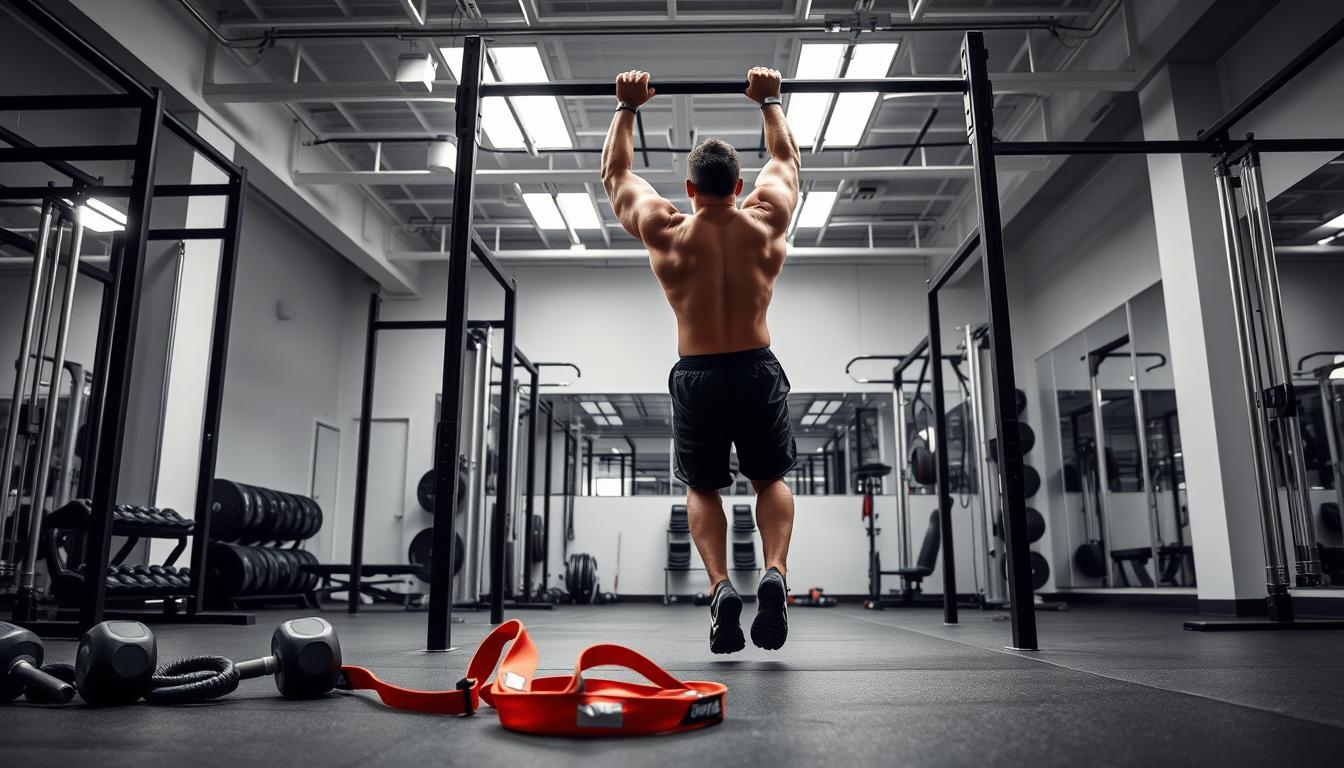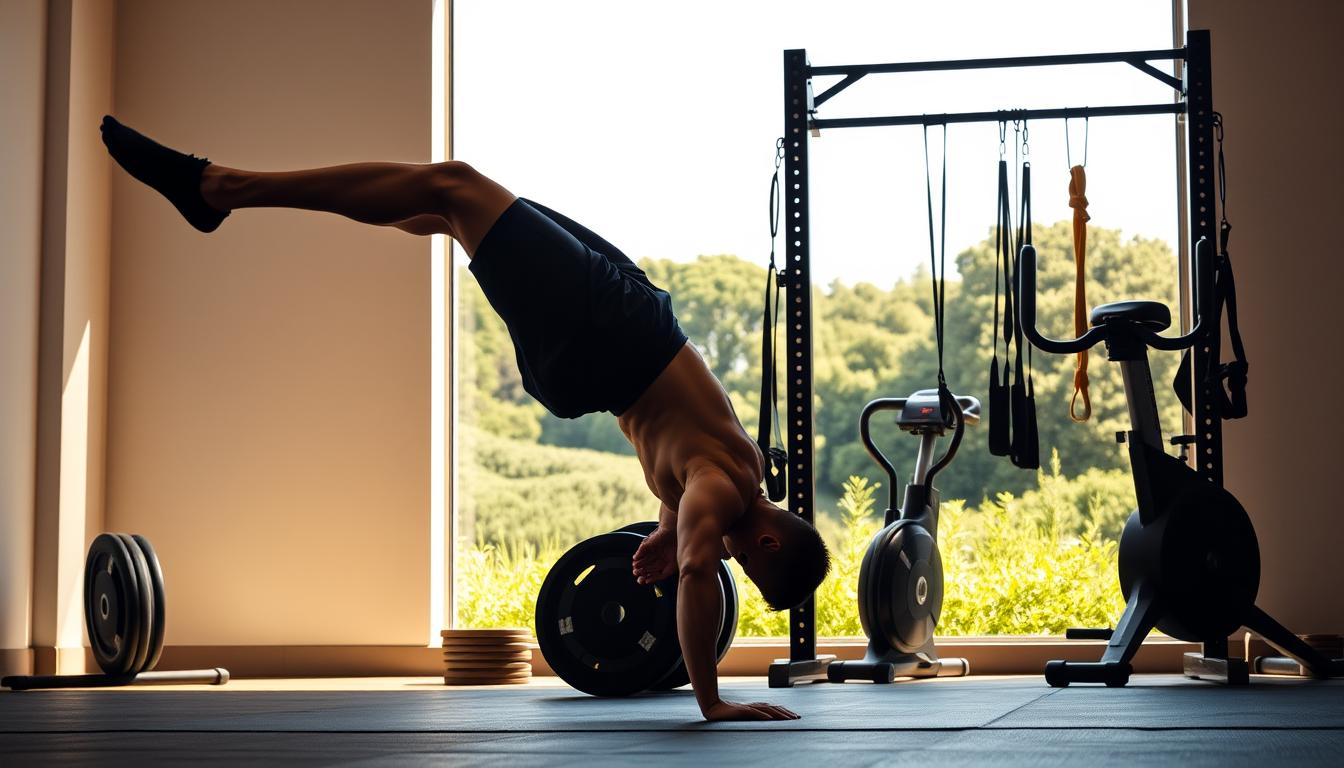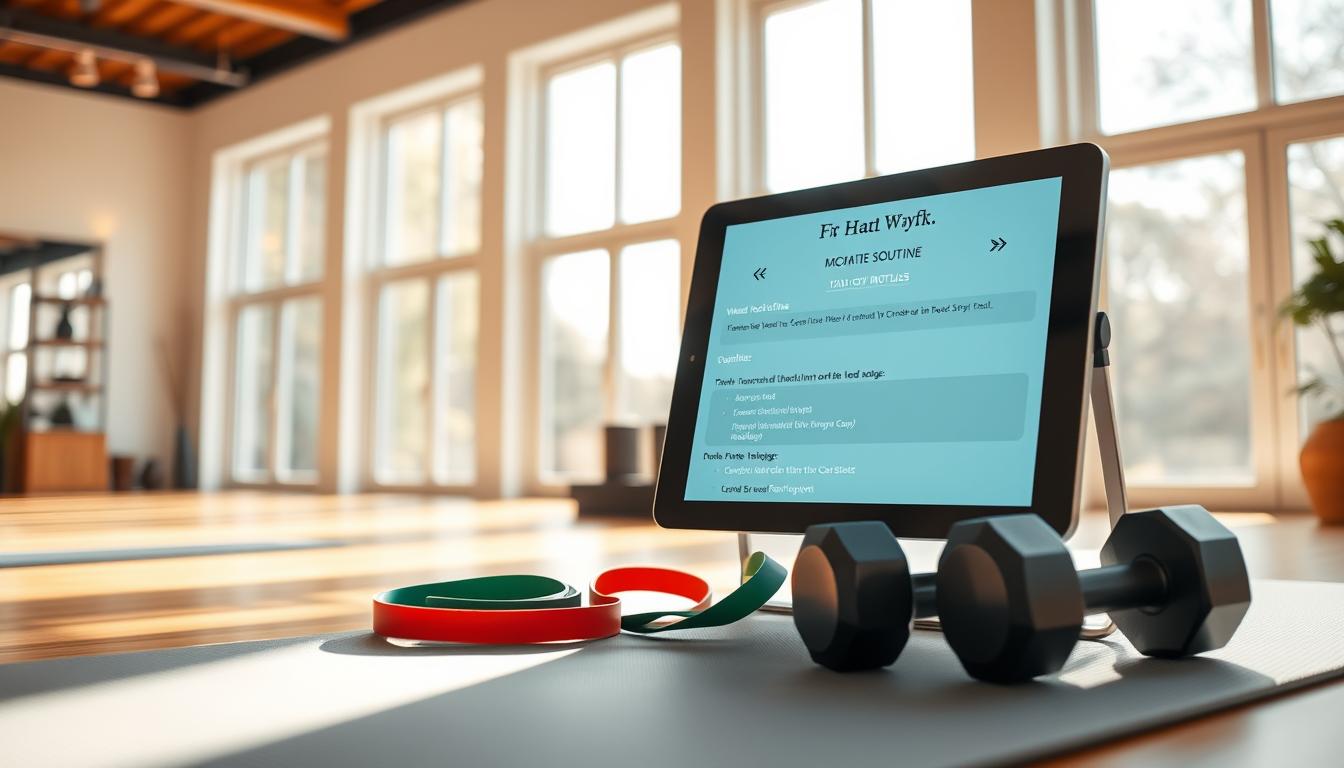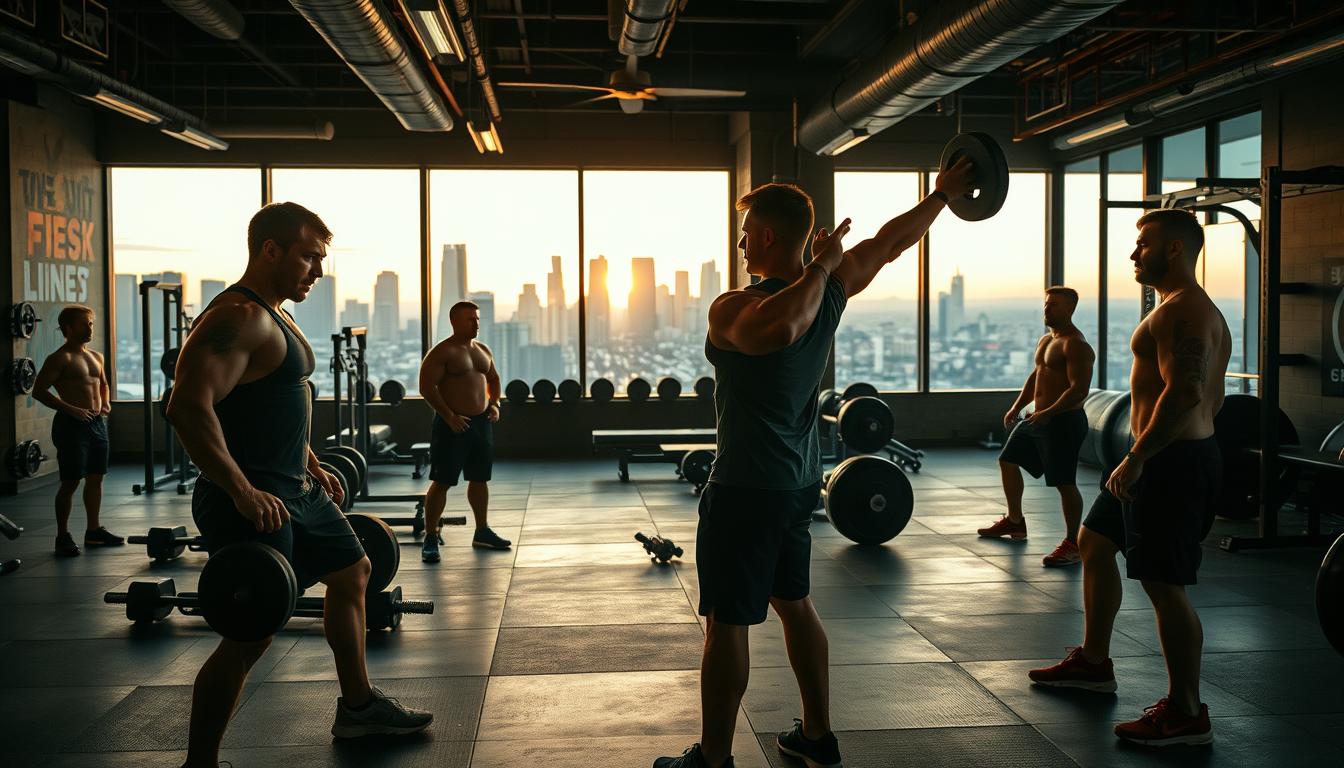Calisthenics x Gym: Blending Bodyweight and Weight Training

Did you know athletes who mix bodyweight movements with traditional weightlifting gain 20% more functional strength in 12 weeks compared to those who stick to one method? This fusion approach isn’t just for elite performers—it’s reshaping how everyday fitness enthusiasts build balanced, resilient physiques.
Hybrid training merges the raw practicality of natural movement patterns with the precision of progressive overload. Instead of choosing between pull-ups and bench presses, you’ll learn to leverage both for unmatched muscle development and real-world agility. The result? A leaner frame, explosive power, and joints that move like well-oiled machinery.
This guide cuts through the noise. You’ll discover how to pair bodyweight mastery with strategic resistance work—no endless hours required. We’ll break down programming that adapts to your schedule, recovery needs, and goals. From foundational push-pull techniques to advanced compound sequences, every strategy serves your growth.
Key Takeaways
- Combines functional movement patterns with targeted hypertrophy methods
- Maximizes strength gains through varied resistance types
- Adaptable to home setups or commercial fitness spaces
- Promotes balanced muscle development across all major groups
- Reduces injury risk by enhancing joint mobility and stability
- Offers time-efficient workouts through strategic exercise pairing
Introduction: Why Blending Calisthenics and Gym Training Works
Your body isn’t designed for single-modality workouts—here’s why today’s top performers refuse to pick sides. The fitness landscape now prioritizes versatile strength over specialization, creating demand for programs that bridge two worlds.
The New Rules of Physical Development
Instagram reels flooded with muscle-ups and kettlebells tell the story: athletes want both raw agility and sculpted physiques. Recent surveys show 68% of trainers now program hybrid routines, up from 42% in 2020. This shift responds to a key insight—pure bodyweight work builds exceptional control, while external weights accelerate muscle growth.
Synergy in Action
Pairing these methods creates a feedback loop. Bodyweight drills enhance joint stability for safer heavy lifts. Barbell squats develop leg power that translates to higher vertical jumps. You’re not just working harder—you’re working smarter.
| Focus | Bodyweight Benefits | Weight Training Advantages |
|---|---|---|
| Strength | Full-range mobility | Targeted overload |
| Muscle Growth | Core engagement | Progressive resistance |
| Endurance | Movement patterns | Time efficiency |
This blend lets you tackle handstand push-ups and deadlifts in the same week. Recovery becomes easier too—alternate intensity levels between sessions instead of grinding one style daily. Modern programs favor this balanced approach, with 3-4 weekly hybrid workouts outperforming 6-day splits for sustainable gains.
Foundations of Calisthenics: The Power of Bodyweight Exercises
https://www.youtube.com/watch?v=O48iH6kY2JQ
Research shows consistent bodyweight training improves balance by 34% while boosting functional strength. These natural movements teach your muscles to work as a unified system, creating lean muscle without equipment. Start with foundational patterns that mirror daily activities – pushing, pulling, and squatting.
Core Movement Patterns
Four key patterns form the bedrock of effective training. Push-ups develop chest and triceps strength while engaging your core. Pull-ups target back muscles and grip endurance. Dips build shoulder stability, and squats enhance lower-body power. Alter hand positions or foot placement to shift focus between muscle groups.
Progressive Adaptation Techniques
Advance your routine through controlled variations. Elevate your feet during push-ups to increase difficulty. Use tempo changes – slow descents build strength, while explosive reps develop power. This approach prevents plateaus and promotes continuous development.
| Basic Movement | Intermediate Variation | Advanced Progression |
|---|---|---|
| Standard Push-Up | Archer Push-Up | One-Arm Push-Up |
| Bodyweight Squat | Pistol Squat | Shrimp Squat |
| Hanging Knee Raise | Toes-to-Bar | Front Lever Raises |
Balance improves through unilateral movements like single-leg squats. Flexibility increases as you move through full ranges of motion. These skills create a solid foundation for adding external resistance later in your fitness journey.
Focus on perfecting form before increasing intensity. Three weekly sessions of 30-45 minutes yield better results than daily grinding. Your body adapts most effectively when combining quality movement with adequate recovery.
Gym Training Essentials: Maximizing Strength and Muscle Mass
Barbells and dumbbells offer something bodyweight alone can't: precise resistance scaling. Structured weight rooms let you target specific muscles while tracking measurable progress. This environment thrives on two rules—gradual challenge increases and strategic effort distribution.
Principles of Weight Training
Free weights build functional strength through stabilizing muscles. Machines provide controlled motion paths for isolation work. Compound lifts like bench presses and deadlifts engage multiple joints, while military presses sharpen shoulder development. Proper form ensures you lift heavier over time without injury.
Progressive Overload and Volume Management
Adding weight or reps weekly forces adaptation. Start with 3-5 sets of 5-8 reps for strength. Switch to 8-12 reps with moderate loads for muscle growth. Track weekly volume (sets x reps x weight) to ensure steady increases.
| Goal | Rep Range | Sets | Rest Periods |
|---|---|---|---|
| Absolute Strength | 3-5 | 4-5 | 3-5 minutes |
| Hypertrophy | 8-12 | 3-4 | 60-90 seconds |
| Endurance | 15+ | 2-3 | 30-45 seconds |
Sample split: Monday—heavy squats (5x5), Wednesday—overhead presses (4x8), Friday—deadlifts (3x3). Adjust intensity based on recovery. Isolate lagging muscles with accessory work like lateral raises or tricep pushdowns.
How Calisthenics x gym exercises merge for Optimal Results

Blending natural movement patterns with measured resistance creates athleticism that excels in real-world scenarios. This fusion approach lets you tackle parkour jumps and heavy lifts with equal confidence, using each method's strengths to offset the other's limits.
Integrating Two Worlds in a Single Routine
Start by pairing complementary movements. Bodyweight drills prime your joints and connective tissues for loaded work. Weighted lifts then build raw power you can apply to advanced skills. Try alternating focus days—Mondays for pull-ups and rows, Wednesdays for deadlifts and farmer carries.
Supersets maximize efficiency. Perform explosive push-ups followed by bench presses to fatigue chest muscles from multiple angles. This dual stimulus triggers faster hypertrophy than either method alone. One study showed 18% greater muscle activation when combining modalities versus traditional splits.
- Morning: Handstand practice (skill development)
- Evening: Overhead presses + lateral raises (strength/hypertrophy)
Structure sessions around movement patterns rather than equipment. Pair pistol squats with barbell front squats to develop single-leg stability under load. Use tempo variations—slow eccentrics during dips, explosive concentric phases with weighted vest jumps.
| Bodyweight Focus | Weighted Pairing | Benefit |
|---|---|---|
| Pull-Ups | Lat Pulldowns | Enhanced back width |
| L-Sits | Leg Raises + Weight | Core density |
| Single-Leg Squats | Bulgarian Split Squats | Balanced leg development |
Recover smarter by rotating intensity. Heavy deadlifts on Tuesday? Follow with mobility-focused flow sequences on Thursday. This rhythm prevents burnout while maintaining progress across all fitness domains.
Advantages of a Hybrid Training Model for Strength and Mobility
Imagine building the endurance to run a 5K and the power to lift twice your bodyweight—all within the same weekly routine. Hybrid models deliver this duality by merging full-body challenges with targeted resistance work. Data reveals athletes using blended programs improve joint stability by 28% while adding lean muscle faster than single-focus regimens.
Functional Meets Focused
Pairing compound movements like push-ups with isolation drills such as bicep curls creates balanced development. Full-range motions enhance mobility, while controlled lifts address weak points. Trainer Chandler Marchman notes: "Clients who combine squats with leg extensions gain hip flexibility while building quad strength—it’s a game-changer for injury prevention."
This approach lets you rotate intensity levels. Heavy deadlifts on Monday? Follow with bodyweight flow sequences on Wednesday. You’ll recover faster while maintaining progress across strength and flexibility goals. Studies show alternating modalities reduces overtraining risk by 41% compared to repetitive routines.
- Boost agility through ladder drills paired with kettlebell swings
- Increase stamina via circuits mixing pull-ups and weighted carries
- Develop joint resilience with mobility flows between strength sets
Ryan Hurst’s athletes use hybrid principles to handle varied resistances—from marathon training to powerlifting. "Your body adapts best when challenged through multiple lenses," he explains. Three weekly sessions combining dynamic movements and precise lifts yield better real-world results than daily gym marathons.
Crafting Your Personalized Workout Program

What separates generic routines from transformative ones? Your ability to design sessions that match your current capabilities while pushing toward new milestones. Start by testing foundational movements: how many strict push-ups can you perform? What’s your maximum deadlift? These benchmarks reveal strengths and gaps to address.
Structuring Bodyweight Sessions
Begin with three weekly sessions emphasizing control and range of motion. Morning routines could focus on skill development—think handstand progressions or L-sit holds. Evening workouts might target strength through pull-up variations and pistol squats. Always pair pushing and pulling movements to maintain muscular balance.
Balancing With External Resistance
Add weights strategically to areas needing growth. After mastering 15 clean push-ups, introduce bench presses for chest development. Pair bodyweight rows with barbell deadlifts to reinforce posterior chain strength. This dual approach ensures you build functional mobility alongside measurable power gains.
| Day | Focus | Sample Pairings |
|---|---|---|
| Monday | Upper Body | Pull-ups + Bent-Over Rows |
| Wednesday | Lower Body | Pistol Squats + Front Squats |
| Friday | Full Circuit | Dips + Overhead Press |
Track progress using a simple spreadsheet. Note weekly improvements in reps, weights, or movement quality. Adjust intensity every 4-6 weeks through deload phases or advanced variations. “The best programs evolve as you do,” notes trainer Alicia Monroe. Rotate exercises quarterly to prevent adaptation plateaus while maintaining core movement patterns.
Balancing Intensity: Managing Reps, Sets, and Recovery
Ever notice how top athletes train hard but never seem burned out? Their secret lies in strategic effort management. Balancing challenging workouts with smart recovery keeps progress steady while avoiding plateaus or injuries.
Finding the Right Workload
Start by matching rep ranges to your goals. For strength, aim for 3-5 reps with heavier weights. Muscle growth thrives at 8-12 reps using moderate resistance. Bodyweight moves like push-ups work best with higher reps (15-20) to build endurance.
Pair these approaches using this framework:
| Workout Type | Rep Range | Rest Periods | Recovery Needs |
|---|---|---|---|
| Strength Focus | 3-5 | 3-5 min | 72hrs |
| Hybrid Session | 6-10 | 90 sec | 48hrs |
| Skill Work | 5-8 | 2 min | 24hrs |
Recognizing When to Rest
Schedule two full rest days weekly. Use active recovery on off days—light walks or mobility flows. Track your sleep quality and morning heart rate. Spikes above your normal range signal needed recovery.
"Progress happens during rest, not just workouts," notes trainer Marcus Reid. If you miss three straight sessions or feel constant fatigue, reduce volume by 40% for a week. Try this three-week cycle:
- Week 1: Build intensity (heavier weights)
- Week 2: Increase volume (more sets)
- Week 3: Deload (lighter sessions)
Adjust your routine monthly based on performance logs. Can’t hit last month’s numbers? Add an extra rest day. Crushing workouts? Gradually increase weight or difficulty. Your body’s feedback trumps any preset plan.
Expert Insights: Strategies from Top Trainers and Athletes

Max Shank, creator of the Ambidextrous Athlete program, puts it bluntly: "Hybrid training isn't optional anymore—it's survival of the fittest in modern fitness." Top coaches now design programs where bodyweight mastery and barbell work coexist seamlessly. Let's break down their winning strategies.
Modern Training Philosophies
Coach Chandler Marchman's athletes follow a 70/30 split: 70% foundational movements, 30% skill development. His blueprint includes:
- Morning mobility flows using animal-inspired patterns
- Afternoon strength sessions pairing pull-ups with deadlifts
- Weekly "test days" to gauge progress in power output
Weight training serves as the anchor for muscle growth, while bodyweight drills refine control. Marchman notes: "Clients add 5% more lean mass monthly when combining weighted dips with ring push-ups versus isolation work alone."
Real-World Success Stories
Ryan Hurst transformed a marathon runner into a 2x bodyweight deadlifter in 18 weeks using hybrid principles. The regimen blended:
| Day | Focus | Key Pairing |
|---|---|---|
| Monday | Lower Body Power | Pistol Squats + Trap Bar Deadlifts |
| Wednesday | Upper Body Strength | One-Arm Push-Ups + Bench Press |
| Friday | Full-Body Circuit | Muscle-Up Progressions + Kettlebell Swings |
This approach reduced injury risk while boosting work capacity. Hurst's athlete now runs sub-3-hour marathons and competes in local strongman events—proof that hybrid methods build versatile strength.
Three non-negotiable tips from the pros:
- Start each session with joint-prep exercises
- Alternate intensity days (heavy weights vs. skill refinement)
- Track progress through movement quality, not just numbers
As Shank concludes: "Your body doesn't care about labels—it responds to smart stress. Give it varied challenges, and watch capabilities explode."
Addressing Common Pitfalls in Blended Workouts
Hybrid programs demand careful navigation—what fuels progress can also derail it if mismanaged. The biggest risks stem from mismatched intensity and recovery neglect. Without structure, you might push too hard in one area while ignoring others, creating weaknesses that invite setbacks.
Overtraining and Injury Prevention
Too many reps with weights after mastering bodyweight moves strains joints. Likewise, endless pull-up sessions without rest days wear down tendons. Watch for these red flags:
- Persistent soreness lasting over 72 hours
- Declining performance despite consistent effort
- Irritated joints during routine movements
Balance your routine using the 2:1 rule—two strength days followed by one active recovery day. If deadlifting heavy on Tuesday, swap Thursday’s weighted squats for mobility drills. Certified trainer Lena Rodriguez advises: "Schedule deload weeks every 4-6 cycles. Drop volume by 40% to let tissues rebuild."
| Common Error | Fix | Benefit |
|---|---|---|
| Same muscle groups daily | Rotate push/pull focus | Reduces inflammation |
| Ignoring form for reps | Film sets for analysis | Prevents chronic injuries |
| No mobility work | 10-minute flow pre-workout | Improves movement quality |
Track rest as diligently as training. Use apps to monitor sleep patterns and heart rate variability. These metrics reveal when to push harder or pull back. Remember: hybrid success comes from sustainable effort, not heroic single sessions.
Progressive Overload and Mobility: Advanced Techniques
Advanced athletes face a critical challenge: pushing limits without compromising movement quality. Strategic weight increases paired with dynamic flexibility work create sustainable growth. This dual focus builds muscle mass while maintaining joint health for long-term progress.
Enhancing Flexibility Through Movement Drills
Dynamic stretches prime your body for heavy lifts. Try leg swings before squats or thoracic rotations prior to overhead presses. These drills boost mobility by lubricating joints and increasing blood flow to connective tissues.
Post-workout static holds address tight areas. A 90-second pigeon pose after deadlifts improves hip flexibility. Combine these with controlled tempo work—3-second descents during pull-ups enhance shoulder range of motion.
Implementing Incremental Weight Increases
Add weight gradually—2.5lb weekly increases on presses or 5lb monthly jumps on squats. Track lifts in a journal to ensure steady strength development. Certified trainer Dana Lin recommends: "If you hit 8 clean reps, add weight next session. Stalled? Improve form before increasing load."
| Exercise | Progression Method | Benefit |
|---|---|---|
| Back Squat | Add 5lbs every 2 weeks | Builds leg power |
| Overhead Press | Increase 2.5lbs weekly | Boosts shoulder stability |
| Bent-Over Row | Use micro plates | Enhances back thickness |
Periodize your programming with 3-week cycles. Alternate between heavy days (85% max effort) and moderate sessions (70% intensity). This rhythm prevents plateaus while allowing mobility work to keep pace with strength gains.
Final Thoughts on Your Hybrid Fitness Journey
Your fitness evolution thrives when combining bodyweight mastery with strategic resistance work. This balanced approach builds functional strength while sculpting lean muscle—no need to choose between athleticism and raw power. Studies confirm hybrid routines deliver 22% faster progress than single-method plans when programmed thoughtfully.
Consistency beats intensity every time. Pair morning mobility flows with evening weight sessions. Track weekly improvements in pull-up counts or deadlift numbers. Your personalized routine should adapt as you grow—swap exercises quarterly and adjust rest days based on recovery signals.
Remember: sustainable results come from respecting rest. Alternate heavy lifting days with active recovery. Use yoga or light cardio to maintain joint health while pursuing strength goals. Top athletes succeed by treating recovery as seriously as their workouts.
Start small. Master foundational movements before adding complexity. Blend push-ups with bench presses, pistol squats with barbell lifts. Each week, aim for three focused sessions that challenge different energy systems. Your body rewards variety with resilient progress.
Now’s your moment. Grab a workout log, design your first hybrid week, and witness the transformation. Strength, endurance, and mobility aren’t competing goals—they’re pieces of the same puzzle. Assemble them wisely.


